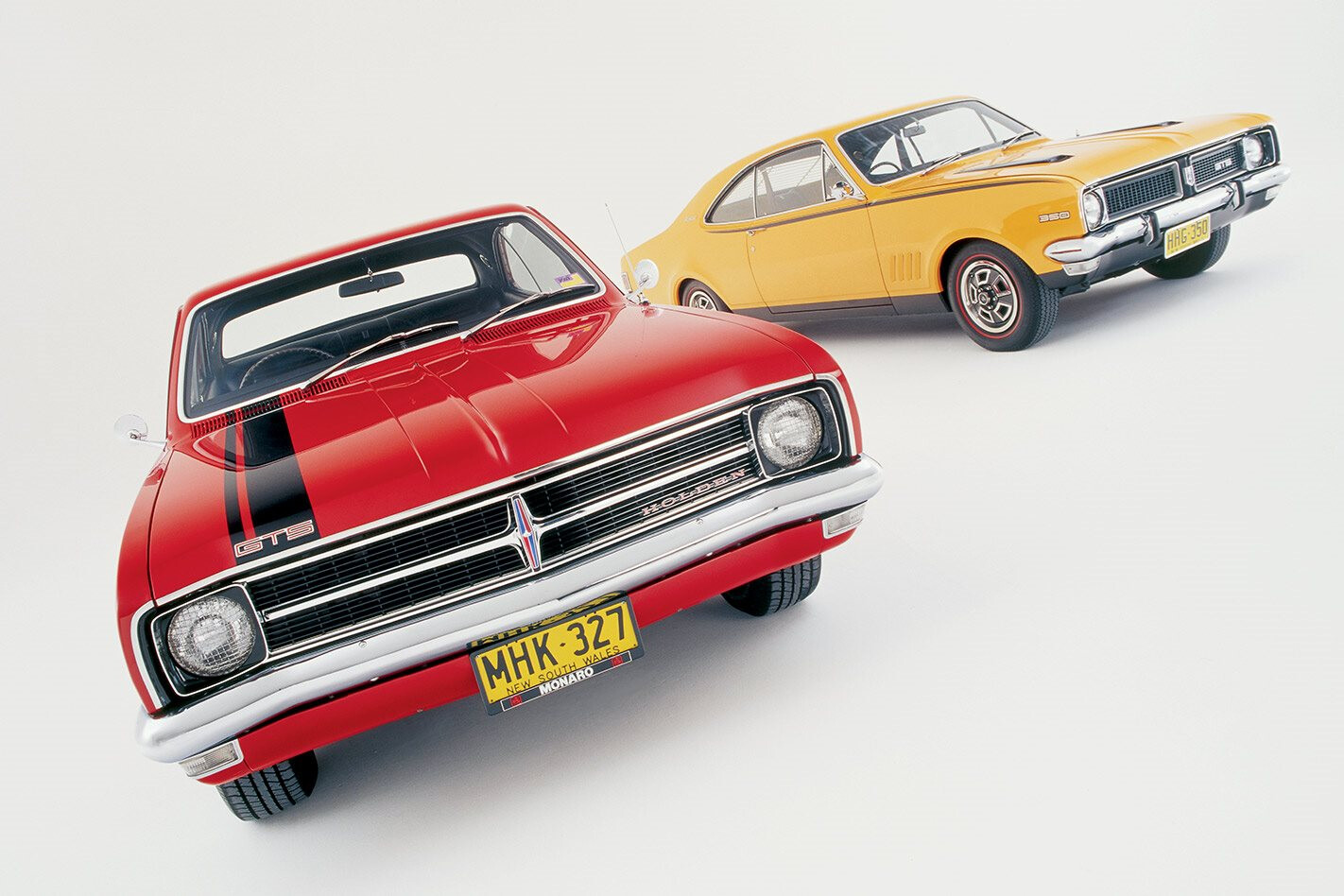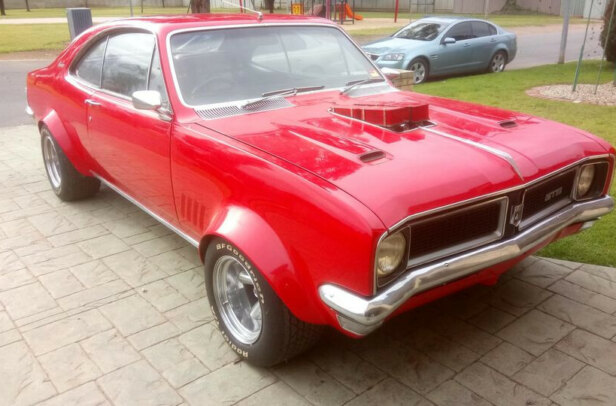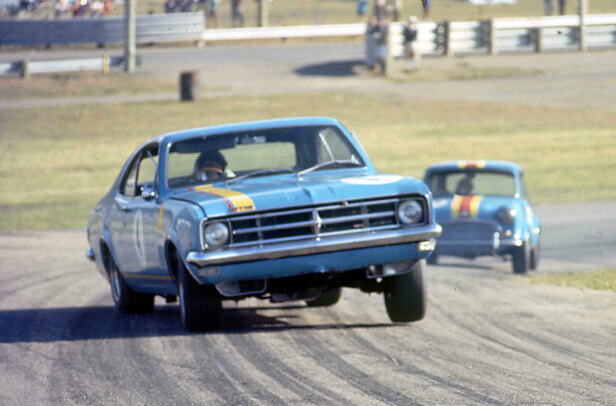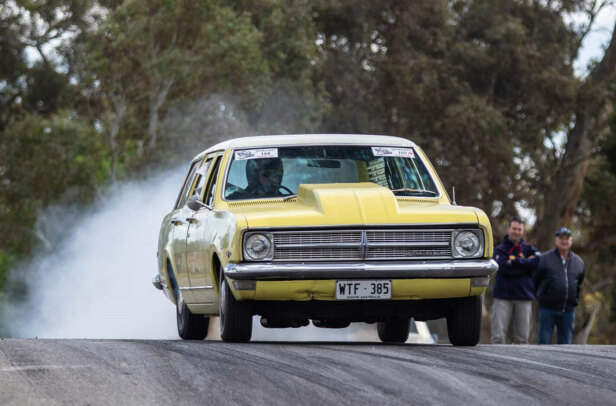IT’S been 50 years since the Monaro blew the minds of conservative Aussie motorists. Developed from a few scrawls on the wall of Holden’s then-new Technical Centre, awards and accolades quickly followed its release, with the new coupe taking out Wheels magazine’s Car of the Year award in 1968, and winning Bathurst two years on the trot.
Initially lean and lithe, the Monaro aged like Elvis, getting fatter as the years went on. The coupe bowed out in 1976 as a special-edition, Caprice-inspired luxury liner, with the Kingswood-based GTS sedan living on until 1978.
The Monaro legend went from go to whoa in just over a decade, but a quarter of a century later, it returned, an automotive Lazarus, conquering the globe and garnering a new generation of fans. The Monaro’s story started well before the release of the initial HK model, with Englishman David Veltman sketching a formal HR Holden coupe in August 1963, which was followed by a full-sized rendering by Aussie head stylist Alf Payze. Using a sedan base, the team built a mock-up coupe with fibreglass quarters and roof, but the styling exercise went no further; the Monaro would have to wait.
HK MONARO July 1968 – May 1969
PRIOR to July 1964, the local GM-H design department existed in little more than a tin shed, with Detroit handling the bulk of the styling requirements. The opening of the Fishermans Bend Technical Centre changed all that; Holden design had a swank new home, headed by new Director of Design Joe Schemansky, fresh from Pontiac.
Amongst the young blood to take up residency in Australia was Ed Taylor, who arrived in November 1964 having just finished styling the Oldsmobile Cutlass. Although Taylor was only at Holden for eight months, he left an indelible mark on its muscle car future.
Leo Pruneau, still based in the USA, oversaw creation of an early clay model, made in Detroit to specifications supplied by Holden. By the time the next phase of HK clays hit the new Tech Centre’s turntable, the car had grown three inches in front of the firewall to better reflect the forthcoming Falcon’s ‘Mustang inspired’ proportions.
Pontiac-style stacked headlights would not survive through to production, but Ed Taylor’s Oldsmobile-inspired blistered wheelarches remained, as did his treatment of the rear turret. Seamlessly joining the rear quarters to the C-pillar was a generation ahead of then-current GM offerings where the roof appeared as a separate hardtop, often divided by a chrome strip.
Interior design area, late 1965
In March 1966, design power couple Ted and Marjorie Schroeder arrived from Detroit, with Marjorie working on the HK’s interior as Ted refined the coupe’s shape. All the while, Managing Director Max Wilson and Marketing Director John Bagshaw championed the case for the two-door to ensure it reached production, the business decision made easier thanks to the significant amount of body components shared with the mainstream sedan.
Ted Schroeder finalised the shape of the daylight opening and completely smoothed the roof’s transition to the rear fenders, echoing closely the 1966 Oldsmobile Toronado. Schroeder was surprised when his boss, ex-Pontiac man John Schinella, approved the shape; it was useless for rear passenger vision and was very progressive compared to contemporary US muscle cars with Coke bottle-inspired haunches.
By August 1966, the final shape of the HK coupe was all but set, with clay models wearing a succession of names, including Kingswood, Premier, GTS and Torana. The styling team applied various frontal treatments to the clays and renderings, including Opel-inspired square headlights. The final design – a vertical badge dividing the grille, centred over a horizontal bar – was suggested by GM style guru Bill Mitchell.
The base coupe’s specs followed those of the Kingswood, with the standard two-door having few sporting pretensions. A 161ci red six and three-on-the-tree manual were standard fitment, but Holden was playing the options game for the first time, offering the 186 six-cylinder, more powerful 186S, and Chevrolet-sourced 307 cubic inch V8 (labelled ‘5-litre’) to those with bigger wallets.
The GTS featured sporty elements throughout, including Premier-style wheelarch mouldings, racing stripes, bucket seats and a set of stylish wheel covers designed by Phil Zmood. Down the back, a stainless moulding stretched between the tail-lights, painted red to evoke the full-width brake light was envisaged but vetoed due to cost.
Starting with the 186S, the GTS could also be specced with the 307 V8, with a choice of either an Opel four-speed for the six or the tougher Saginaw for Chev. Those who wanted a slushbox could option a Powerglide. John Bagshaw pushed for the the 327ci V8 to ensure the Monaro would be competitive against the Falcon GT both in the showroom and at the track. Ticking the 327 V8 option on the GTS also brought a lower ride height, twin exhausts, wider wheels, a 3.36:1 Salisbury LSD, 25-gallon fuel tank, and the four-speed Saginaw.
With the Monaro name locked in by early 1968, an initial media launch went ahead at Surfers Paradise Raceway on 22 July that year. On test were a Picardy Red 186S coupe, a Bright Blue Metallic GTS 307, and the hero car, the Warwick Yellow GTS 327. The yellow cars would go on to embody the very essence of the HK Monaro, featuring in many of the print adverts and bolstered by Bruce McPhee’s 1968 Bathurst win.
- HK Monaro, Monaro GTS coupe: 15,637 units
HT MONARO May 1969 – July 1970
RELEASED on 12 June, 1969, the HT’s mild facelift belied the under-bonnet changes. Externally, upgrades were minor, with a new grille and enlarged tail-lights shared with the sedan. Plans to extend the tail-lights into the bootlid were again vetoed due to cost, as was a front and rear spoiler kit. Although Ted Schroeder’s bonnet ‘power domes’ that had been designed for the HK made production for the HT GTS, stylists could do little else except shift badges and fiddle with the striping.
Bigger changes occurred inside the cabin, with revisions by David Veltman and Noel Bedford addressing criticism of the tachometer’s placement on the centre console, moving it to the dashboard and deleting the HK’s strip speedo altogether.
The big news was the introduction of the 253ci Holden V8, previewed in the striking RD001 Hurricane concept car. Backed by either a four-speed manual or Powerglide auto, it was optional across the Monaro range. The Chev 307 remained available with a Powerglide only, until stocks ran dry in November 1969, when it was replaced by the locally built 308ci V8.
The 327 bowed out with the HK, replaced by the big 350ci V8 in August, again sourced from Chevrolet. The largest engine option remained exclusive to the Monaro GTS, which became Holden’s homologation special. Wheels magazine returned a 125mph top speed and 15.6-second quartermile in October 1969, the same month Colin Bond and Tony Roberts took out the Hardie-Ferodo 500 at Bathurst.
- HT Monaro, Monaro GTS coupe: 14,437 units
HG MONARO July 1970 – July 1971
THE HG Monaro range received the usual upgrades, including an ABS plastic grille and new tail-lights, but by 1970, the sheen was dulling from Holden’s hero coupe. Sales were flagging, and although John Bagshaw had a 360-horsepower Camaro Z28 V8 backed by a Muncie four-speed fitted to a test car, the performance focus within the company had shifted to the smaller, lighter Torana GTR XU-1.
The focus on luxury meant the GTS received softer, Kingswood-spec spring rates underneath, while externally the stripe package remained available but became optional. Disc brakes became standard fitment on V8-optioned cars for the first time, although the NSW Government had made them a legislative requirement from 1969.
Aside from the GTS 350, Aussie engines featured across the board, along with Holden’s new Tri-Matic three-speed auto, which slid into the range late in the HT’s run, coming on stream from May 1970.
- HG Monaro, Monaro GTS coupe: 14,437 units
– Read more: Holden Monaro turns 50 part two – HQ, HJ, HX, HZ series




Comments